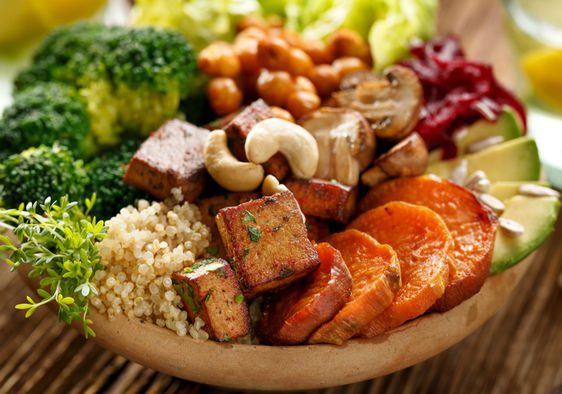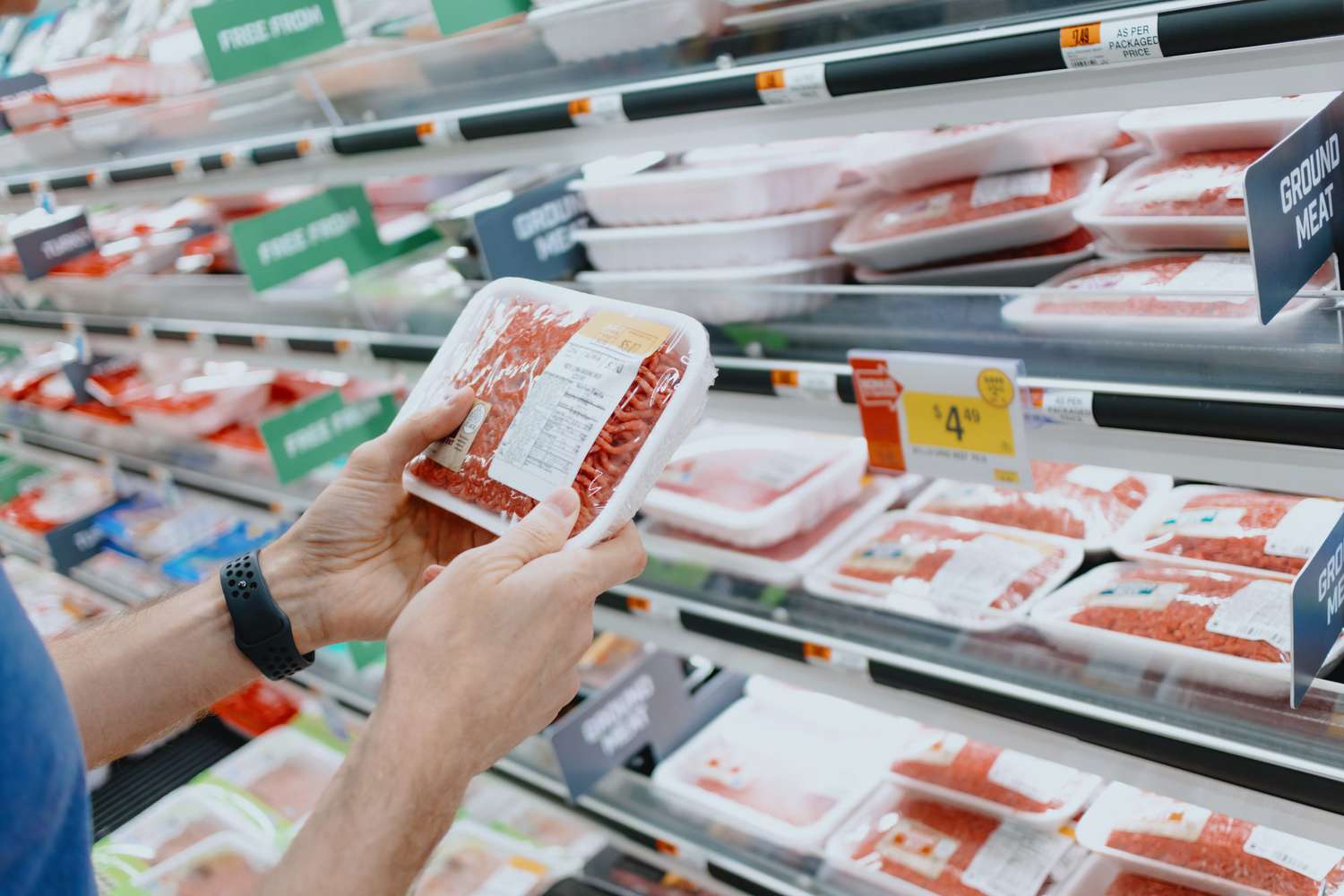Meat alternatives offer a tasty meal but have their drawbacks as well
Reassuring logos and label claims on meat substitutes may offer a comforting image. However, in today’s strange world of food-processing technology, marketing wizardry, and chronic diseases, it’s more important than ever to make informed food choices.
When it becomes popular to avoid certain items or ingredients, the food industry responds with a substitute that simulates the real thing. Sometimes, the products that come out of that effort bring their own problems.

“Remember, the front of the label is food marketing at its cleverest. It’s designed to seduce you into an emotional purchase and then trick you with misleading claims,” functional medicine physician Dr. Mark Hyman says in a video on his website.
If a food product was heavily processed in a factory, there are several factors to consider, including how well the original ingredients have retained their nutrients, what additives, preservatives, and problematic ingredients were added, and even potential endocrine disruptors in the packaging.
Why Plant-Based Meat?
We’re living in a brave new world of food technology, with heavily-funded companies competing to develop the most meat-like products, from lab-grown cultured meats made from in vitro cell cultures of animal cells to simulated meat-like substitutes. The prospect of eating lab-grown, “cell-based meat” is understandably off-putting to many meat-eaters and vegetarians alike. Even though it resolves, in a somewhat unsettling way, some of the ethical concerns about meat production, it brings its own ethical and environmental questions.
The overconsumption of meat (especially of low quality) in American diets has helped produce major health problems and environmental concerns. Eating too much meat is linked to heart disease and cancer. Industrial animal agriculture, with its overcrowded, unnatural, and often inhumane practices, also is a huge source of pollution. It also results in raising unhealthy animals that are dependent on hormones, vaccines, and antibiotics.

Animals that are 100 percent grass-raised and finished in a more natural environment are much healthier and happier. The problem is that meat raised with these higher standards of care is hard to find and more expensive, which makes it an unlikely option for giant fast-food chains looking to sell burgers as cheaply as possible. After all, the quality of the meat doesn’t matter to many people if additives and condiments can enhance the flavor.
Some forms of meat are more dangerous than others. For instance, heavily processed meats such as bacon, hot dogs, and lunch meat have already been classified as Group 1 carcinogens by the International Agency for Research on Cancer.
For these reasons, many people are seeking meat options. Economic concerns, such as the rising cost of animal feed and labor shortages, are also making traditional meat products more expensive, including higher-quality, more humanely raised meats. Plant-based meat products are held up as a solution to some of these issues.
What Does ‘Plant-Based’ Really Mean?
While faux meats may satisfy the cravings of a vegetarian-in-transition, they come in all grades of quality. That raises the question of whether they are healthy or even safe? Because of the sometimes extreme amount of processing involved in creating the latest generation of meat substitutes, a number of issues arise, researchers note.
“Several potential challenges are associated with food safety and nutrition, including different kinds of chemical and microbial contaminants in the ingredients used, food adulteration issues, high levels of food additives, the use of genetically modified ingredients, mislabeling, new sources of allergens, vitamin or mineral deficiencies, and changes in protein quality,” Diana Bogueva, head of the Centre for Advanced Food Engineering at the University of Sydney, and David Julian McClements, professor of food science at the University of Massachusetts, Amherst, wrote in a recent article.

Many faux-meat products use highly processed ingredients in addition to preservatives, oils, added sugars, and high levels of salt. The resulting product can be much less healthy than the shiny, progressive marketing messages that consumers are ingesting.
It’s important to look for information on the product’s packaging to determine if it has been bioengineered (genetically modified) and to see what types of strange-sounding ingredients may be present.
“Plant-based meat alternatives contain near-neutral pH and high protein and moisture content, making them susceptible to microbial growth and spoilage,” Bogueva and McClements wrote.
To extract protein from plants, companies use chemicals, enzymes, and physical methods such as ultrasound. That’s before the protein is combined with other ingredients and put through extrusion processes to become physically meat-like. These products also have to be packaged and correctly temperature-maintained to avoid contamination, physical alteration, or microbial growth.
In this context, the term “plant-based” can quickly become secondary to the term “hyper-processed.” While it may technically be true, it can also become misleading. If the plants are processed enough to taste like meat because of additives and questionable processes, they’ve traveled a long way from their most nutritious starting point.
While they are clearly not a healthier alternative to actual plant foods, these substitutes can give meat eaters a satisfying alternative. They also offer a solution to some of the environmental and economic problems associated with animal food production and the ethical concerns of some consumers. So it’s not that all meat replacements are unwelcome, it’s just that consumers need to understand the nature of the products they are buying.
Natural Plant-Based Alternatives
Eating a mostly plant-based diet, with whole fruits and vegetables, nuts, beans, mushrooms, and seeds can have remarkable benefits, including a lowered risk of cancer.
According to a long-term Japanese cohort study, “substitution of plant protein for animal protein, mainly for red or processed meat protein, was associated with lower risk of total, cancer-related, and cardiovascular disease-related mortality.”
While few plants have the complete array of nine essential proteins—that is the proteins that can’t be synthesized by our bodies—a combination of plant foods can provide all nine.

And while plant-based eating can certainly be a good thing, it’s important to remember that not all “plant-based” diets are equal. Plant-based junk food is widely available and many meat alternatives fall firmly within the category of “hyper-processed foods.” It’s important to focus on eating the plants themselves rather than the “Frankenfoods” that may be created from them.
There are many age-old, natural alternatives to newer meatless burgers. It’s easy to find recipes online for veggie burgers and dishes that utilize beans, lentils, mushrooms, potatoes, soy, and tempeh (fermented soy). The Cleveland Clinic’s website has a recipe for a “zesty black bean burger” without the use of vegetable oils or excessive additives. Legumes and soy also may be allergens for some people, so substitute according to the requirements of your unique gut makeup.
















